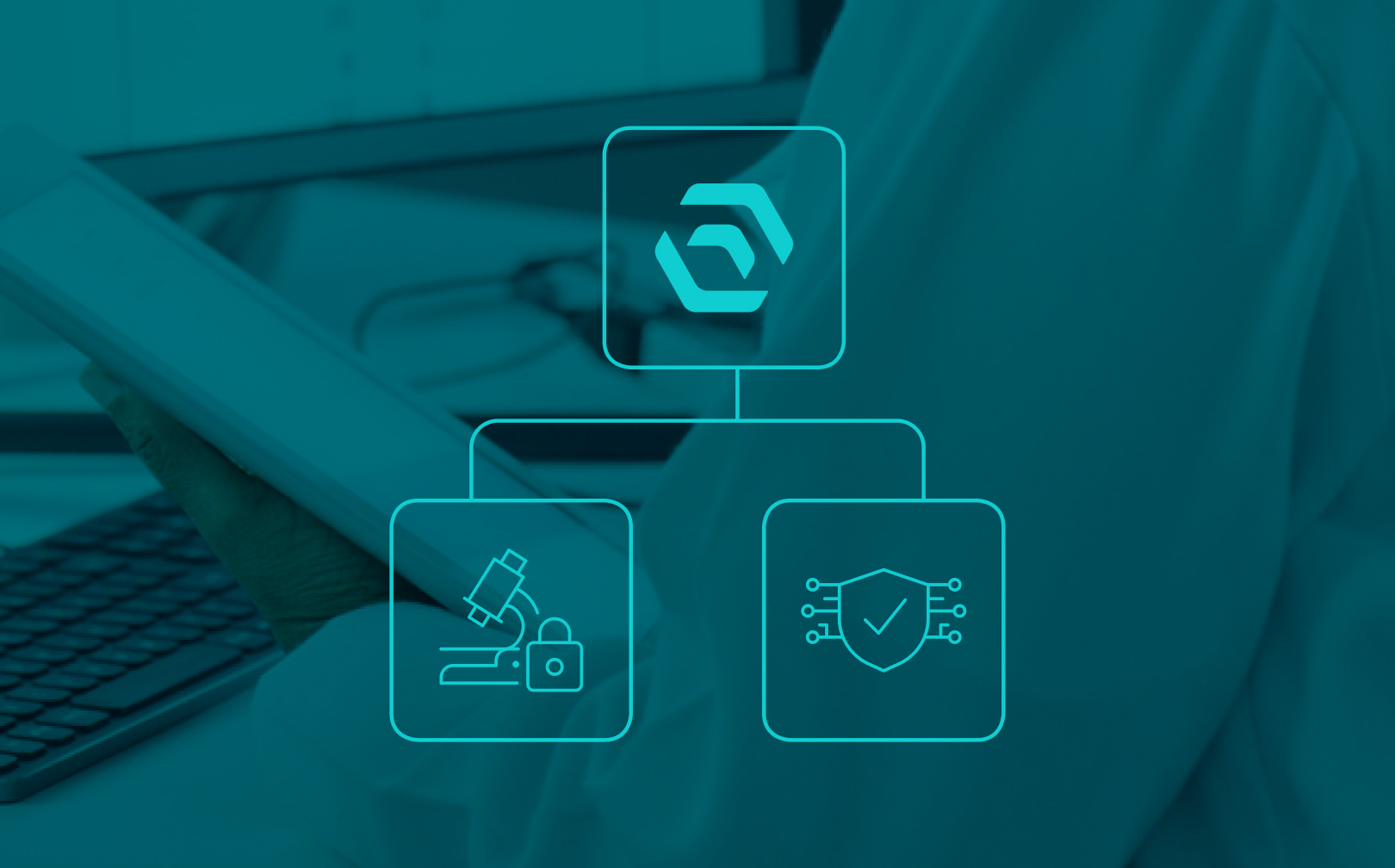Research Integrity Starts with System Integrity
Research integrity depends on system integrity. Explore how SciSure helps labs protect data, ensure compliance, and scale reproducibility

Download Whitepaper
Trust is the currency of science.
Whether you’re publishing results, submitting regulatory data, or developing new therapeutics, the confidence others have in your data determines how far it can go. And that confidence—research integrity—doesn’t just come from good intentions. It comes from robust systems.
Too often, we treat integrity as a people issue. We focus on protocols, training, or maybe ethics. All important. But after decades working with labs of every size and discipline, I’ve seen something else at play: when your systems are fragmented, your integrity is at risk—even when your people do everything right.
In many labs, data still lives across a messy patchwork of systems—an ELN here, a spreadsheet there, paper records in a binder. Teams copy and paste data across platforms, version control becomes guesswork, and no one’s quite sure what the “final” version is.
When an auditor asks for proof of compliance or a collaborator needs to validate results, you realize how much depends on assumed knowledge and goodwill. And when people move on, or mistakes surface, the fragility of those systems becomes painfully clear.
That’s why I believe system integrity is the backbone of research integrity—and why connected lab platforms are no longer a nice-to-have, but a scientific necessity.
When systems undermine science
Research integrity doesn’t fail all at once. It erodes quietly, through disconnected point solutions, manual data transfer and systems that were never designed to work together.
I’ve walked into labs with world-class researchers using cutting-edge instrumentation—only to find their data pipelines held together with nothing more than good intentions. It’s not because they don’t care. It’s because the systems around them haven’t kept pace with the demands of modern science.
Disconnected platforms; siloed ELNs, standalone LIMS, inventory tools that don’t talk to safety systems—all create invisible fault lines. Data gets duplicated or lost. Metadata goes missing. It becomes impossible to trace the full lifecycle of a sample or reconstruct the context behind a result.
And when that happens, the consequences are real. Reproducibility suffers. Internal reviews stall. Regulatory submissions take longer and carry more risk. Worse still, you lose confidence—not just in your systems, but in the science itself.
For organizations working in regulated environments, the stakes are even higher. Incomplete audit trails, missing version histories, or informal approvals can mean non-compliance, rejected submissions, or reputational damage.
These aren’t edge cases. They’re everyday realities in labs that haven’t yet joined up their data infrastructure. And they represent a quiet threat to the very thing science depends on most: trust.
What research integrity actually looks like
Too often, research integrity gets framed as either a matter of ethics or a matter of compliance—something enforced through training or checked off in audits. But in real-world lab environments, it comes down to something more fundamental: can your infrastructure support consistent, trustworthy science?
That infrastructure isn’t just software. It’s the entire operational system that governs how data is generated, recorded, shared, and reviewed. It includes your ELN, LIMS, EHS system, instrument integrations, user permissions, approval chains, and how all of those components interact.
In labs with strong system integrity, research integrity is built-in. You don’t have to rely on memory, trust, or double-checking a spreadsheet—because the process itself ensures traceability, reproducibility and control at every step.
Here’s what it looks like in practice:
• Protocols are version-controlled and digitally signed by authorized users
• Sample records are automatically linked to test results, instruments, and reagents used
• Every action is timestamped and traceable across users and systems
• Permissions and role-based access prevent accidental edits or data leaks
• Metadata—like experiment conditions or instrument settings—is captured automatically, not added after the fact
It’s about more than preventing fraud. It’s about preventing drift—those subtle gaps between what was planned, what was done, and what gets reported. When those gaps widen, reproducibility breaks down. When they close, trust scales.
And this matters whether you’re running a small academic group or a global R&D program. Because sooner or later, someone outside your team—an auditor, a collaborator, a regulator—will ask: can we rely on this data?
Research integrity means being able to say “yes”, and being able to show it, systemically. That’s exactly what we’re building at SciSure: a connected home base for the lab where trust, traceability, and transparency aren’t bolted on—they’re built in.
The value of system integrity
Research integrity is often treated as an outcome—as something measured by reproducibility, accuracy or audit success. But behind all those metrics is a more foundational truth: you can’t deliver research integrity unless your systems are built to support it.
This is where system integrity comes in. It’s not about individual tools. It’s about how your tools work together to preserve the full lifecycle of your data: generation, approval, storage, access and re-use.
Labs with strong system integrity can trace every data point back to its origin—who captured it, how it was reviewed, and where it’s stored. Their workflows don’t rely on individuals to go the extra mile; they’re embedded in the platform. And when regulations evolve or new technologies are introduced, those systems adapt, because they were designed with change in mind.
System integrity isn’t an add-on—it’s the architecture. And in our experience, when you get that right, research integrity stops being a problem you fix—and starts being something you can trust.
Turning risky into resilient
Disconnected systems don’t just slow things down—they erode confidence. When your ELN, LIMS, EHS system and instrument data all live in separate silos, the gaps between them become places where integrity fails: a missing sample ID, an overwritten protocol, a spreadsheet with no owner.
That’s why connected platforms are so essential—not just for operational efficiency, but for resilience. When systems are joined up, workflows become transparent. Data becomes trustworthy. Compliance becomes routine, not reactive.
At SciSure, we’ve built our Scientific Management Platform (SMP) around that principle. It brings together the critical building blocks of research management—ELN, LIMS, EHS, inventory, sample tracking, regulatory workflows and audit logs—into one coherent, cloud-native environment.
Within the SMP, system integrity is more than a principle—it’s a set of connected capabilities designed to make compliance and reproducibility seamless. That includes:
• Automated sample lineage tracking across collection, processing, and storage
• Embedded compliance checkpoints aligned with 21 CFR Part 11, GxP, and ISO 17025
• Configurable approval chains with full digital audit trails
• A unified environment where ELN, LIMS, and EHS modules speak the same language
• Scalable SDK-based integration, allowing labs to evolve without losing traceability
But just as importantly, the SMP isn’t rigid. Every lab works differently. That’s why we offer both a growing library of ready-to-use integrations and a developer Software Development Toolkit that supports custom workflows, instrument integrations and data pipelines. You’re not stuck working around the platform—you shape it around how your lab already works.
And when your systems are this connected, integrity becomes effortless. You’re no longer relying on tribal knowledge to chase down files or verify data lineage. It’s all there—verifiable, reproducible and ready to stand up to scrutiny.
Research resilience starts here. Not with good intentions or paper-based processes, but with infrastructure that’s designed to make trust scalable.
Research integrity is in your hands
Research integrity isn’t just about what happens at the bench—it’s about what happens behind the scenes. The tools, the workflows, the handoffs, the audit trails. If those systems are fragile, no amount of rigor at the surface can compensate for what’s missing underneath.
That’s why integrity has to start at the system level. When your infrastructure supports consistency, traceability and compliance by default, research integrity becomes scalable. Defensible. Repeatable. It becomes a property of your lab—not just the people in it.
At SciSure, we believe that good science needs good systems. And we’ve built our platform to help labs create the kind of environment where integrity thrives—now and in the future.
If you’re serious about protecting the trustworthiness of your research, start by asking: do your systems support the science you stand behind?
Ready to future-proof your lab’s integrity? Contact us to see how SciSure can help you unlock the system your science deserves.
Read more of our blogs about modern lab management
Discover the latest in lab operations, from sample management to AI innovations, designed to enhance efficiency and drive scientific breakthroughs.





